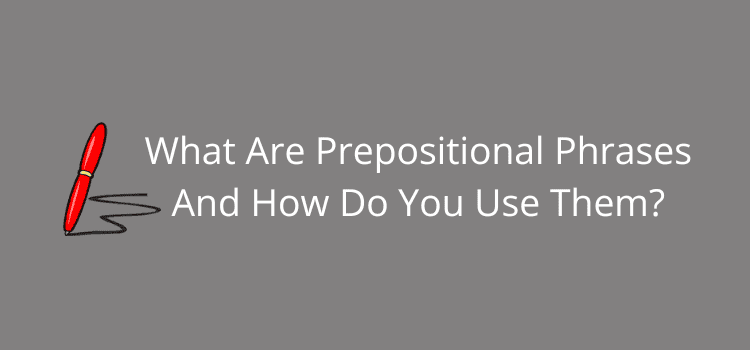
Parallelism in writing is sometimes called parallel structure or construction. It means using the same or similar grammatical structures within a single sentence or across two or more sentences.
The structures you use can be words, phrases, or clauses with the same grammatical function and following a set pattern.
When you use parallel structures in writing, it creates a sense of balance, or even rhythm, and makes your writing easier to read and understand.
The best part is that it is one of the easiest literary devices to learn and use.
The basics of parallelism
The best starting point is when you have two or more words in a list within a sentence.
On the weekend, I enjoy seeing my family, going out for dinner and to walk my dog. (Not parallel)
The problem here is that the last item in the list uses the infinitive verb, to walk, while the first two, seeing and going, are in the gerund form.
To make the sentence parallel, we need to use either the gerund or infinitive form for all three items in the list.
On the weekend, I enjoy seeing my family, going out for dinner, and walking my dog. (Parallel)
On the weekend, I like to see my family, go out for dinner, and walk my dog. (Parallel)
You can also apply this to adjectives.
Martha is always meticulous, efficient and has confidence. (Not parallel)
Martha is always meticulous, efficient, and confident. (Parallel)
Once you understand how parallel structures work, it’s a very easy way to make your writing much clearer.
Constructing parallel clauses
Like lists, clauses also need to have the same structure.
A good example is with sentences using coordinating conjunctions such as but, and, so, or, and for.
It’s rather strange that I adore green beans but hate eating peas. (Not parallel)
The clauses before and after the conjunction should use the same grammatical form.
It’s rather strange that I adore green beans but hate peas. (Parallel)
It’s rather strange that I adore eating green beans but hate eating peas. (Parallel)
It’s a fine point, but there is a mismatch of structures in the first example. The first clause is a preference for a noun, while the second is a preference using a continuous verb.
The solution is to ensure both clauses use the same structure.
Well, you decide. We can go dancing, or we could go to the pub. (Not parallel)
The problem in the example above is that can is in the present in the first clause, and in the second clause, it is could, which is the conditional or past form of can.
Again, it simply needs the verb forms to be parallel.
Well, you decide. We can go dancing, or we can go to the pub. (Parallel)
Well, you decide. We could go dancing, or we could go to the pub. (Parallel)
The best choice would probably be the first because the verb decide is also in the present.
Advanced forms of parallelism
Repetition of words, phrases, or grammatical structures occurs in some established literary devices.
Anaphora is one that uses the repetition of a word or phrase at the beginning of consecutive clauses or sentences.
One famous example is by Charles Dickens at the beginning of The Tale of Two Cities.
“It was the best of times, it was the worst of times, it was the age of wisdom, it was the age of foolishness, it was the epoch of belief, it was the epoch of incredulity, it was the season of light, it was the season of darkness, it was the spring of hope, it was the winter of despair.”
Epistrophe, sometimes called epiphora, is the opposite of anaphora because it uses repletion at the end of clauses or sentences.
In The Merchant of Venice by William Shakespeare, he uses epistrophe in this well-known quote.
“I will buy with you, sell with you, talk with you, walk with you, and so following, but I will not eat with you, drink with you, nor pray with you.”
Symploce is a combination of anaphora and epistrophe where the same words or structures are used at the beginning and end of consecutive sentences.
Part of a speech by Bill Clinton is a classic example.
“When there is talk of hatred, let us stand up and talk against it.
When there is talk of violence, let us stand up and talk against it.
When there is talk of fear, let us stand up and talk against it.”
Antithesis uses an opposite or a contrast, but importantly, the same grammatical parallel structure.
A hit song by the rock group The Clash is a perfect example of using conflicting choices in parallel.
“Should I stay or should I go?”
Using parallelism in your writing
You can find many uses in all forms of writing. It can help to improve clarity and conciseness or to add more emphasis or impact.
It is easy to implement at the basic level, especially with lists of actions, nouns, or adjectives within a sentence.
For clauses, such as those for contrasts or comparisons, keeping the clauses in parallel helps reading ease and understanding.
While constructing and using the four literary devices can be more challenging, it is an opportunity to be more creative.
The best opportunities are often in introductions or conclusions of a text or poem.
Try it once, try it again, try it until you succeed.
Summary
Writing involves using so many facets and literary devices that it can sometimes seem like a never-ending journey.
However, being attentive to parallel structures is one aspect that is easy to adopt.
You don’t need to dive straight into the advanced forms. All you need to do is take a little bit of extra care with the basics of parallel sentence construction.
It’s quite easy to write clear and concise sentences that emphasize the equal importance of the connected elements.
If you master this aspect alone, you will be well on your way to improving your writing.
Related Reading: Periodic Sentence And Anastrophe – What’s The Difference?



